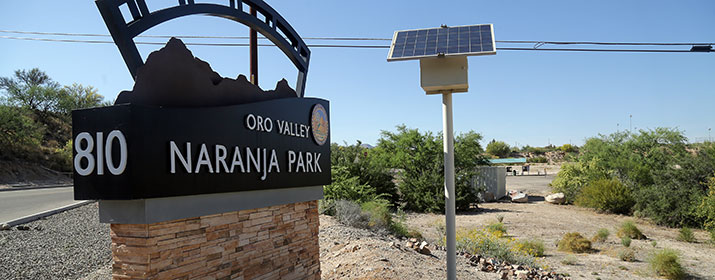
Getting to the top of a wind turbine puts a whole new spin on taking your breath away.
Imagine a vertical ladder that reaches 260 feet in the air and you get the idea.
Even after a decade of climbing turbines, Steven Lavinger still appreciates the view.
“I always enjoy getting up there because it means I’m at the top – the climbing part isn’t all that fun,” joked Lavinger, Oso Grande Planning Supervisor. “It’s a different view when you get to see the different terrain and the different paths and features of the land you don’t get to see at an eye level perspective.”
Oso Grande is Tucson Electric Power’s newest and largest renewable energy resource, located on 24,000 acres of desert in southeast New Mexico. Oso Grande includes 62 turbines, including some that reach more than 600 feet from base to blade tip.
And someone has to climb them.
Lavinger shared a video from his recent climb, the first ever for a TEP employee, which was part of an effort with our corporate safety department to create a well-rounded safety program for climbing and working in the towers.
An Air Force veteran who obtained training in the wind industry through the Airstreams Technical Institute after leaving the service, Lavinger served as a project manager and trainer on Siemens wind turbines prior to coming to his role at Oso Grande.
Some technological advances have made climbing easier. Climb assists, akin to a pulley system on a motor, help with the climb. A service lift can also take employees about three-fourths of the way up as well. The first deck, at 50 feet, provides a good place to recover, and since climbers are in safety harnesses, they can even rest during the climb if necessary.
Lavinger, who climbed 260 feet in 10 minutes, is currently working with our safety team on a conditioning and endurance program. “You really do have to maintain a certain physical aptitude to be able to do this and do this safely,” he noted.
Though Lavinger has experience with other wind systems, Oso Grande is the first North American wind farm to integrate two different turbine designs into one system. He appreciates that distinction, even if, as a California native, he doesn’t always appreciate the site’s desolate desert landscape.
“Coming from a place with beaches and mountains, it’s a geographical challenge to get excited about the terrain,” he joked. “But even as barren as it is, there’s still nothing like the view from the top.”






